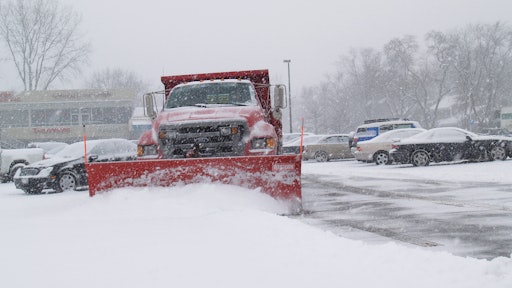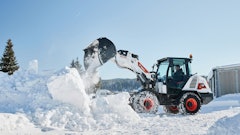
(NOTE: Part 1 of the series talked about the importance of budgeting, establishing a backup plan in the event that snowfall proves to be less than normal, and cost-side management.)
The next thing to do is plan the types of proposals you will submit to clients. If you're like most contractors and do not have piles of cash sitting in the bank, you need to spread your sales revenue risk over the winter months. That's why it's a good idea to submit two or three different types of proposals.
Making fixed contracts work
You should have at least one fixed bid in your portfolio. This will guarantee some cash flow—even during mild winters. However, you need to think through this type of proposal very carefully.
Any fixed bid should be submitted for a period of at least three years. Precipitation will vary from year to year. You do not want to get caught with a one-year bid when that one year experiences very heavy snowfall. That's why it is so important to study snowfall trends and cycles in your region.
Your fixed bid should have some additional parameters. For example, you should put a limit on the number of inches of snow that you are responsible for. You may also want to have a blizzard clause which states that any one storm over a certain amount of inches is billed on an hourly basis.
Be sure to spell out the number of sandings that are included in the contract. Once you reach that number, the client will be billed per application.
Spell out how you will handle stacking and removal of snow on site. It is very difficult to include this in any fixed-sum contract because there are so many variables to consider.
One of the most important clauses that contractors leave out of their proposals is an ice clause. Dealing with an ice event is very costly. In most cases you need to provide additional sand/salt treatments. In some cases you need to clear the parking lot of any excess accumulation.
Here's a general rule of thumb you can follow with respect to ice storms:
- An inch of ice is equal to 12 inches of snow
- You then bill in increments of a quarter-inch
- You will need to calculate the cost of treating and plowing for ice events in 4-inch increments
- You can also state that all ice situations will be handled on a per-hour and -application basis
The bottom line is that you must set up a system that works best for you and the client. The most important thing is to have it as part of your proposal.
Making per-hour contracts work
It never hurts to have a contract or two on a per-hour basis. The key to the success of this type of proposal is the relationship you have with the client. If both of you trust one another, this is a fair method to use if you do not like to take on a lot of fixed contracts and risk per inch.
This type of contract is useful when you utilize a lot of subcontractors. The pure markup of their rates based on actual work hours will help reduce your exposure.
Making per-inch/per-push contracts work
Every snow removal contractor needs to have some per-inch/per-push contracts. As you become more experienced in snow removal, this is a great way to bid your work.
These contracts are very straightforward and eliminate any misunderstandings between you and your client. Simply find a neutral source to verify the number of inches and you are off and running. You are paid every time you go out and clear snow. In most cases there is an increment that allows you to boost your pricing to the next tier; perhaps every 3 inches.
In order for per-inch/per-push contracts to work, though, you need to have a good understanding of your numbers. You need to know what it costs you to push that snow. This information allows you to validate the “retail” number you are putting on the street. You'll know that you are charging enough to cover all of your fixed and overhead costs. You'll know that markup for profit really exists.
You also need to understand the business cycle of your clients so you can allocate the right equipment at different times of the day. A storm during the day may not require the same amount of equipment that you would need at night.
Knowing when to call in employees and subcontractors is something that comes from experience and good planning. It also leads to running an efficient operation which will add to your bottom line. Per-inch contracts should also have an ice, removal and stacking clause.
Retainers help you mobilize your operation
Jobs that require an upfront outlay of funds on the part of the contractor justify the use of a retainer. We're talking about things like the purchase of ice melt, placing storage trailers on site, renting equipment, and even having personnel on call. As a contractor, you cannot be expected to take all of the risk and expenses when these types of requirements are placed on you.
In this particular case, you need to work out a pre-arranged sum of money that is either fully or partially guaranteed to you for the expenses involved in mobilizing your operation. It does not matter if you are working on a fixed-sum, per-inch or per-hour basis. You will find that most clients will understand and be more than willing to work something out with you.





























